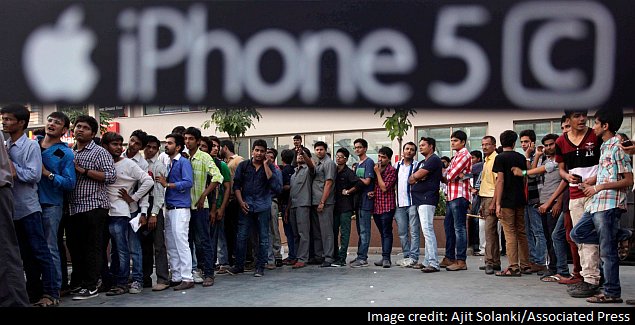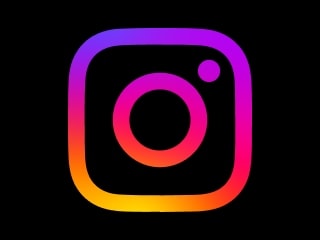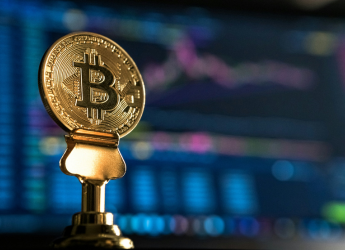- Home
- Mobiles
- Mobiles Features
- The cost of being cool in India? An iPhone
The cost of being cool in India? An iPhone

"I've used Android phones forever, but the iPhone is hardier and makes a social statement," said Sathyendra, whose new phone has become a conversation opener with clients. "I think I look, not wow, but cool and corporate," he said.
Indians use the monthly payments, called equated monthly installments, to buy a variety of products and services, like branded jeans and cosmetic dental treatments. That Apple used this method too clinched it for him. "EMIs make the iPhone affordable to Indians like me," said Sathyendra, who takes home a salary of $400 a month.
In 2013, Apple wakened to the potential of the world's fastest-growing smartphone market. India also happens to be the second-largest mobile market, with 800 million active users. "Apple sees that the market is at a takeoff point. Sales numbers could get serious within a year or two," said Anshul Gupta, a Mumbai-based principal analyst for mobile devices at the research firm Gartner. Apple's shipments have doubled from 2012 and will surpass 1 million phones in 2013, Gupta said.
In a price-sensitive country where multinational corporations sell bottles of soda for 16 cents, pizzas for 75 cents and burger meals for $1.40, basic cellphones have dominated the landscape. Smartphone penetration is less than 20 percent of the phone-using public. But a combination of falling prices, fast 3G speeds and a thriving app ecosystem is fueling the adoption at ripping speeds.
Shipments more than doubled, to 41.4 million, last year, according to IDC, a market research firm. The smartphone market grew 229 percent year-on-year in the third quarter of 2013, and IDC projects shipments will exceed 129 million by 2015.
With that kind of energy, this is a market where Apple can no longer afford to be a fringe player, selling to an elite few and losing out to pushy rivals. It is also a market where 80 percent of smartphones sell in the range of $70 to $200, said Gupta, the Gartner analyst. High prices have kept Apple at the tail of the top 10 brands by sales, way behind No. 1 Samsung, which sells more than three-quarters of its phones for less than $400, and No. 2 Micromax of India, whose most expensive phone is $350. The cheapest iPhone costs about $525 in India.
To draw young buyers and increase its volume and market share, Apple, based in Cupertino, Calif., offered a number of enticements besides the payment plan. Full front-page newspaper ads and TV commercials in recent months offered bonuses for trading in certain old phones and multiple deals, but with a single carrier so far. Wary of the inevitable branding-versus-pricing dilemma, Apple carefully couched these offers to not look like discounts.
"Apple has shown great agility in their India strategy all through 2013," said Manasi Yadav, a Bangalore-based senior mobile industry analyst with IDC India.
Making the phones cheaper, without appearing to be cheap, is enticing a new category of young, brand-conscious Indians, like Chaithra Nayak, to switch to the more expensive iPhones. Nayak, 24, who studies in the bustling coastal city of Mangalore, took six months to persuade her parents to get her an iPhone. Her father, a businessman, eventually buckled when she told him she could trade in her old Sony smartphone for a discount of 13,000 rupees, or $216, on the iPhone 5c, which costs 41,900 rupees, or $698.
"When I use my blue-colored iPhone, I draw attention," Nayak said.
Alongside the promotional offers, Apple has widened distribution channels, especially in second-tier Indian cities.
Anith Prakash, 26, a sales executive at a premium Apple reseller, iPlanet, in a popular Mysore mall, can vouch for the results. In the city, which neighbors the technology hub of Bangalore, the store jostles with outlets of Puma and Levi's in the mall.
"A lot of younger, first-time customers are attracted to the offers," said Prakash, who added that the store had a 40 percent increase in sales in the past few months.
"The trade-in and EMI offers are getting an excellent response," he said. "Many are combining both, then the price does not pinch very hard."
Buyers, long accustomed to paying a phone's full price, got the first taste of carrier bundling, a sweetener that has been wildly popular in Western markets, when Reliance Communications of Mumbai began the promotion in Mumbai and Delhi. "It is a zero-bill, peace-of-mind plan that makes every Indian's affordable iPhone dream come true," the company's chief executive, Gurdeep Singh, said.
Mapping a pricing-versus-branding strategy for India has been tricky for Apple's executives. (Apple declined to comment for this article.) The initial reaction to the iPhone 5 was tepid. Contrary to the prerelease buzz that some phones would be priced for "emerging markets," Apple breached yet another Indian smartphone pricing barrier of 70,000 rupees: The top-end iPhone 5s costs 71,000 rupees, or $1,180.
Mobile Unlocked's iPhone 5s price index, which compares affordability of the phone relative to a country's per capita income, finds that it is least affordable in India. The $759 price of the iPhone 5s is 22 percent of India's per capita gross domestic product, compared with 1.37 percent of per capita GDP in the United States and 10 percent in China.
Not unexpectedly, buyers in India were put off. Prakash, who sold Nokia devices for two years before joining the iPlanet store 18 months ago, said: "Nokia's entry-level phones cost 2,000 rupees. For that amount, you can only buy iPhone screen protectors and protective cases in our store."
In Mysore, Sathyendra coveted the iPhone 5s but had to pay more than a month's earnings even for the cheaper 4s he eventually settled for. But others balk at the high price. Shashidhar Sathyanarayan, a 46-year-old software entrepreneur based in Bangalore, said he was happy with his Samsung smartphone. "It is criminal to spend 45,000 rupees for a brand name; only those who want to project a 'happening' image will pay," he said.
Apple's high-priced phones are no competition for the country's top brands, Samsung and Micromax. Samsung controls 33 percent of the smartphone market, and Micromax has 17 percent, according to IDC. Both blanket the market each year with several offerings for every price band.
"Micromax is giving India what it wants: more bang for the buck," Rahul Sharma, its co-founder and chief executive, said in a phone interview. "Most Indians don't walk into a store asking for a smartphone; they go, "Bhaiyya, isme chat chalega?" ("Brother, will the chat apps work on this phone?")
The 5-year-old Micromax, which is backed by the private equity firm Sequoia Capital, among others, sold 2.2 million smartphones in the quarter that ended in September, compared with 300,000 smartphones in the same quarter the previous year. It is set to surpass $1 billion in sales in the fiscal year that ends in March. Apple's numbers are "unimpressive" and its phones are overpriced, Sharma said.
What ought to make Apple executives uneasy is that competition is building in the premium segment. Even Micromax, known primarily for its low-priced phones, is looking to invade iPhone's territory.
"We are going up notch by notch," Sharma said. "We are changing the tonality and cool factor of the brand."
© 2014, The New York Times News Service
Catch the latest from the Consumer Electronics Show on Gadgets 360, at our CES 2026 hub.
Related Stories
- Samsung Galaxy Unpacked 2025
- ChatGPT
- Redmi Note 14 Pro+
- iPhone 16
- Apple Vision Pro
- Oneplus 12
- OnePlus Nord CE 3 Lite 5G
- iPhone 13
- Xiaomi 14 Pro
- Oppo Find N3
- Tecno Spark Go (2023)
- Realme V30
- Best Phones Under 25000
- Samsung Galaxy S24 Series
- Cryptocurrency
- iQoo 12
- Samsung Galaxy S24 Ultra
- Giottus
- Samsung Galaxy Z Flip 5
- Apple 'Scary Fast'
- Housefull 5
- GoPro Hero 12 Black Review
- Invincible Season 2
- JioGlass
- HD Ready TV
- Laptop Under 50000
- Smartwatch Under 10000
- Latest Mobile Phones
- Compare Phones
- Tecno Spark Go 3
- iQOO Z11 Turbo
- OPPO A6c
- Samsung Galaxy A07 5G
- Vivo Y500i
- OnePlus Turbo 6V
- OnePlus Turbo 6
- Itel Zeno 20 Max
- Lenovo Yoga Slim 7x (2025)
- Lenovo Yoga Slim 7a
- Realme Pad 3
- OPPO Pad Air 5
- Garmin Quatix 8 Pro
- NoiseFit Pro 6R
- Haier H5E Series
- Acerpure Nitro Z Series 100-inch QLED TV
- Asus ROG Ally
- Nintendo Switch Lite
- Haier 1.6 Ton 5 Star Inverter Split AC (HSU19G-MZAID5BN-INV)
- Haier 1.6 Ton 5 Star Inverter Split AC (HSU19G-MZAIM5BN-INV)

















